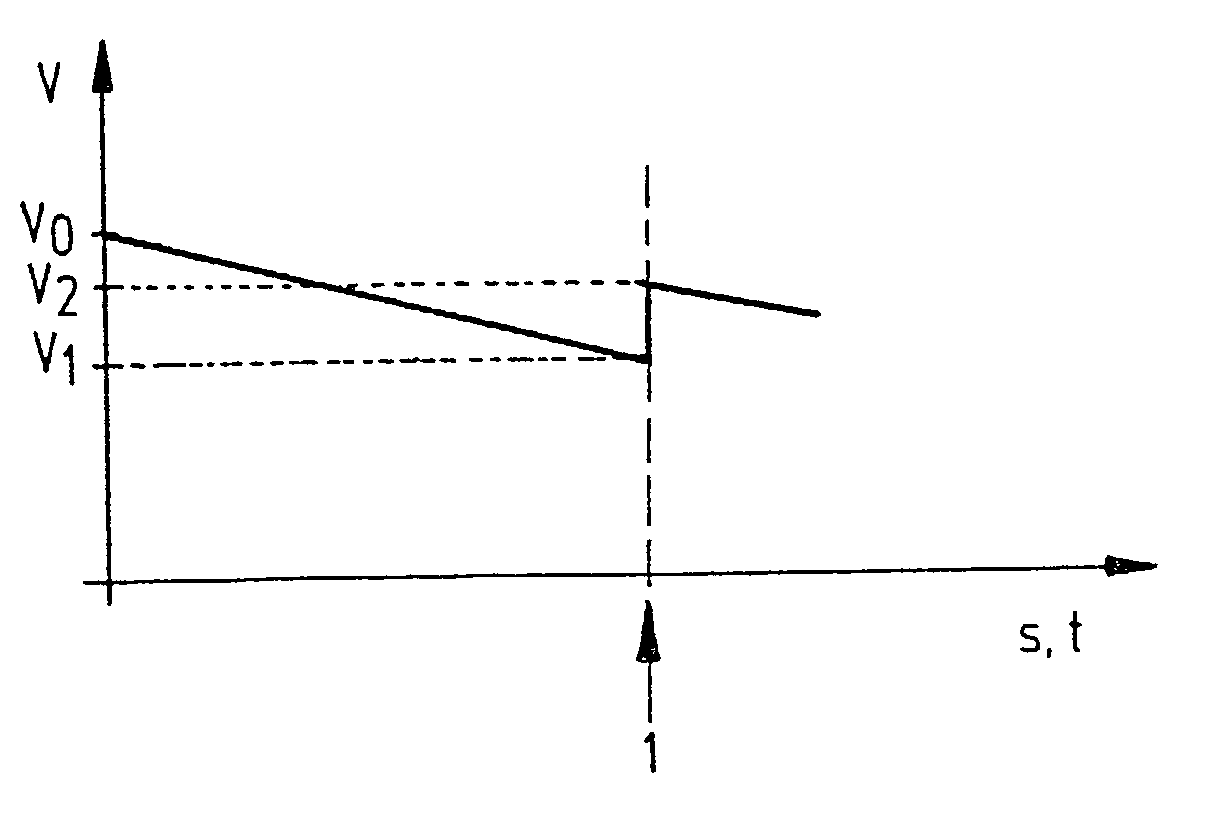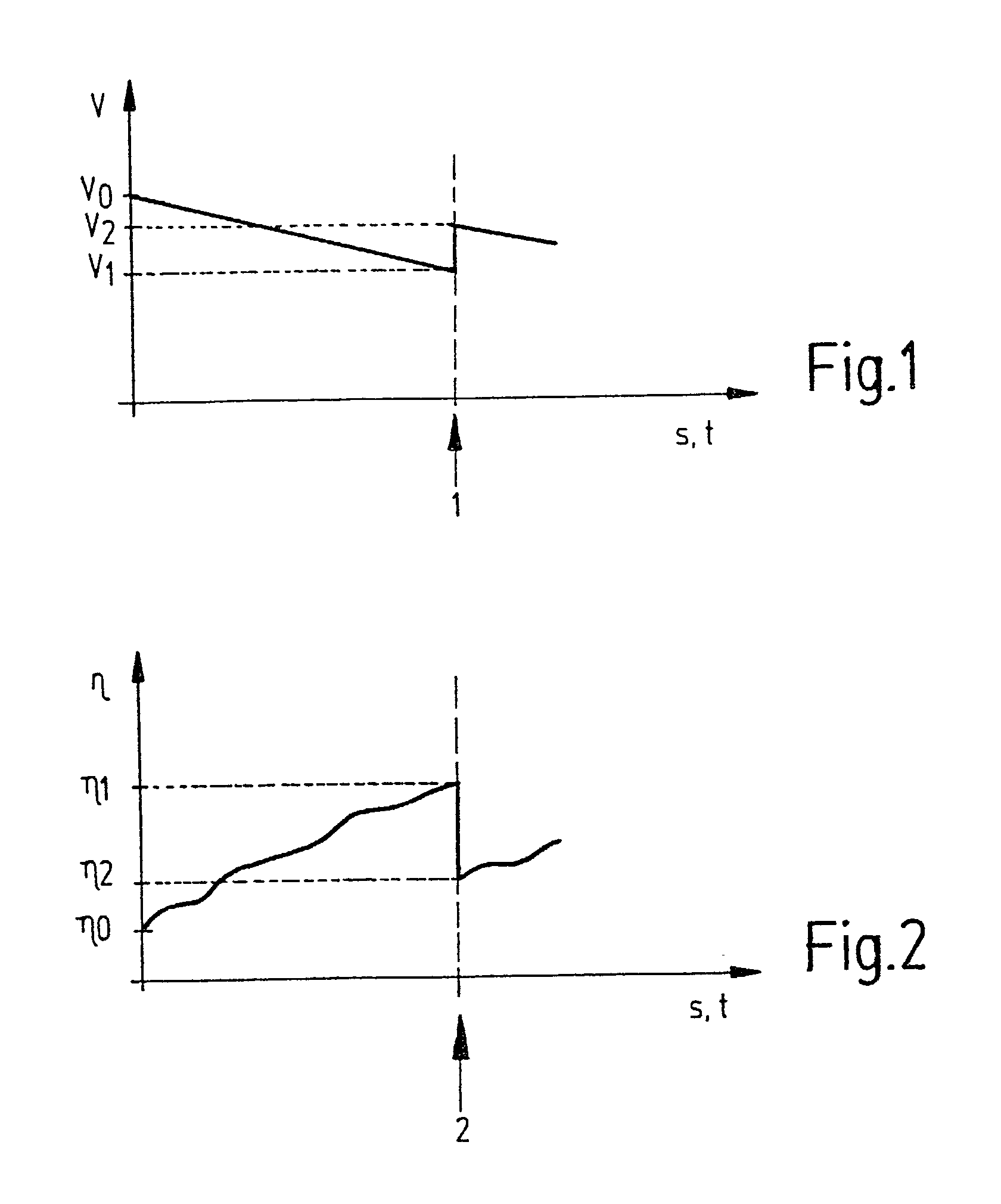Method of evaluating the wear of engine oil taking into account the addition of fresh oil
a technology of engine oil and wear, applied in the direction of machines/engines, liquid/fluent solid measurement, instruments, etc., can solve the problems of affecting the oil change criterion, and a different type of fresh oil
- Summary
- Abstract
- Description
- Claims
- Application Information
AI Technical Summary
Problems solved by technology
Method used
Image
Examples
Embodiment Construction
[0015] FIG. 1 shows the typical change in oil volume (V.sub.0) from the point in time of the last oil change until the point in time (1) of the addition of fresh oil (V.sub.1), after which the oil volume increases again to a level (V.sub.2), the various quantities, i.e., oil volumes, being determined as a function of the filling level via the level sensor and the electronic analyzer.
[0016] FIG. 2, in contrast, illustrates the increase in viscosity of an engine oil starting from a viscosity (.eta..sub.0), when the engine oil is new, up to a viscosity (.eta..sub.2) at the point in time (2) when oil is added. The addition of fresh oil then results in a sudden change in the value of the viscosity (.eta..sub.2) which characterizes the mixture of oil which is already partially "used" and freshly added oil. For the illustration in FIG. 2, it has been assumed that the resulting viscosity value (.eta..sub.2) drops when fresh oil is added, although that need not necessarily be the case if eng...
PUM
| Property | Measurement | Unit |
|---|---|---|
| viscosity | aaaaa | aaaaa |
| temperature | aaaaa | aaaaa |
| viscosity sensor | aaaaa | aaaaa |
Abstract
Description
Claims
Application Information
 Login to View More
Login to View More - R&D
- Intellectual Property
- Life Sciences
- Materials
- Tech Scout
- Unparalleled Data Quality
- Higher Quality Content
- 60% Fewer Hallucinations
Browse by: Latest US Patents, China's latest patents, Technical Efficacy Thesaurus, Application Domain, Technology Topic, Popular Technical Reports.
© 2025 PatSnap. All rights reserved.Legal|Privacy policy|Modern Slavery Act Transparency Statement|Sitemap|About US| Contact US: help@patsnap.com


